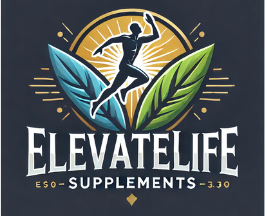Ayahuasca Retreats: A Comprehensive Guide
Are you intrigued by the idea of partaking in an ancient healing practice that is gaining recognition in modern society? Traditional plant medicine, specifically ayahuasca, has piqued the interest of individuals worldwide as a means of self-discovery. In 2019 alone, over 62,000 people participated in ayahuasca experiences at retreats, predominantly hosted in Peru.
For those considering embarking on this healing journey, it is crucial to have a clear understanding of what to expect and how to prepare. To assist you in this process, we have outlined a comprehensive guide covering the essential aspects of ayahuasca retreats.
Understanding Ayahuasca Retreats
Ayahuasca retreats have evolved from their Amazonian roots to organized programs that blend traditional wisdom with modern support systems. These retreats are typically hosted at specialized centers, with Peru leading the way with 173 established facilities that facilitated over 160,000 ayahuasca experiences in 2019.
Participants in these retreats engage in ceremonial experiences led by experienced shamans or facilitators. These ceremonies are meticulously planned events where individuals consume the traditional ayahuasca brew under professional supervision. What sets these retreats apart are the holistic healing practices incorporated into the programs, including pre-ceremony preparation periods, multiple ayahuasca ceremonies, integration sessions, additional healing modalities, group sharing circles, and personal consultations with healers.
Choosing The Right Center
Selecting the appropriate retreat center is a critical decision that can significantly impact your ayahuasca journey. By 2019, there were at least 232 ayahuasca retreat centers operating in Amazonian countries and Costa Rica, each offering varying practices and service standards. When choosing a center, consider factors such as safety protocols, facilitator experience and credentials, ceremony group sizes, location accessibility, integration support services, participant testimonials, cost, and program duration.
Essential Preparation Steps
Thorough preparation is key to ensuring a safe and meaningful ayahuasca experience. While most reputable centers provide detailed guidelines, some fundamental aspects to consider include physical preparation (such as following diet restrictions, avoiding alcohol and drugs, staying hydrated, and getting adequate rest) and mental and emotional preparation (setting clear intentions, practicing mindfulness, journaling, reducing stress, and connecting with past participants).
What to Expect During Ceremonies
Having an understanding of the structure of ayahuasca ceremonies can help alleviate anxiety before the event. While each center may have its unique approach, ceremonies generally follow a similar pattern, including opening rituals, individual blessings, ceremonial music, personal healing work, and group sharing or closing rituals. The guided experience typically lasts 4-6 hours, with trained facilitators available for assistance.
Integration and Aftercare
The work continues after the ceremony ends, as many individuals consider the integration phase as crucial as the ceremony itself. During this time, participants assimilate insights from the experience into their daily lives. Successful integration involves regular journaling, maintaining a supportive routine, connecting with integration circles or coaches, making lifestyle changes, processing emotions, and staying connected with the retreat community.
Understanding The Ceremony Space
The environment in which an ayahuasca ceremony takes place can significantly impact the experience. Traditional ceremonies occur in purpose-built structures called malocas, which provide a safe and sacred container for the work. The maloca serves several functions, including creating a protected ceremonial environment, maintaining comfort, providing space for personal processing, and supporting energetic cleansing.
Practical Considerations
When preparing for an ayahuasca retreat, it is essential to pack items such as comfortable clothing, light layers, insect repellent, first aid supplies, a journal, meditation cushion, water bottle, and natural toiletries. Most centers also require participants to follow a specific diet (dieta) before and after ceremonies, which includes avoiding certain foods to prepare the body and enhance the healing experience.
Research And Verification
Before committing to a retreat, conducting thorough research is imperative to ensure a safe and reputable experience. Key areas to investigate include the center’s operational history, facilitator backgrounds, participant testimonials, safety protocols, medical screening processes, and integration support offerings. Be cautious of red flags such as promises of miraculous cures, pressure to book quickly, lack of safety protocols, and unusually low prices.
Final Thoughts On Your Journey
Embarking on an ayahuasca retreat requires careful planning, deep preparation, and respect for traditional healing practices. By investing time in researching and preparing for your retreat, you can ensure that it aligns with your needs and values. Prioritize safety, integration support, and respect for the tradition to make the most of this transformative healing journey.
In conclusion, well-prepared ayahuasca retreats, coupled with proper guidance and integration support, offer a profound path to healing and spiritual growth. By following the essential takeaways outlined in this guide, you can embark on your ayahuasca journey with confidence and mindfulness.

